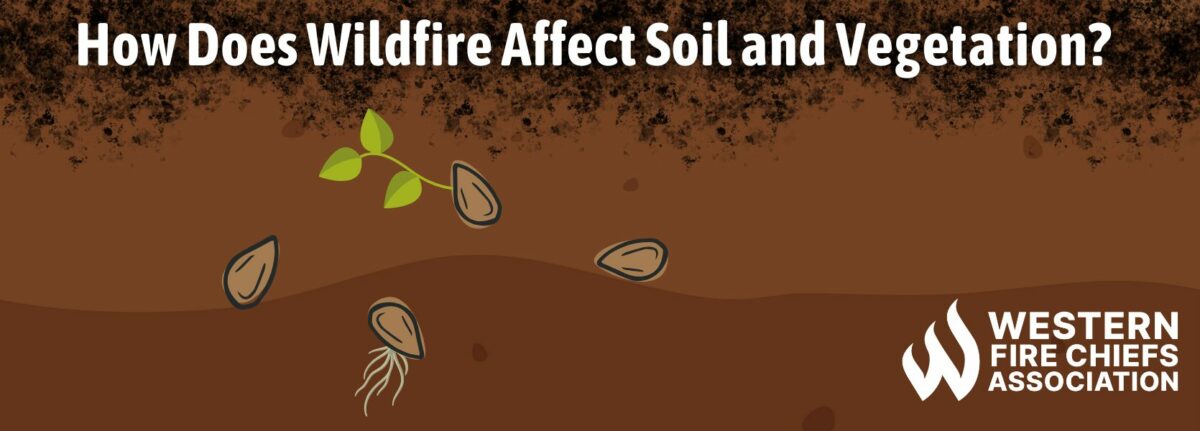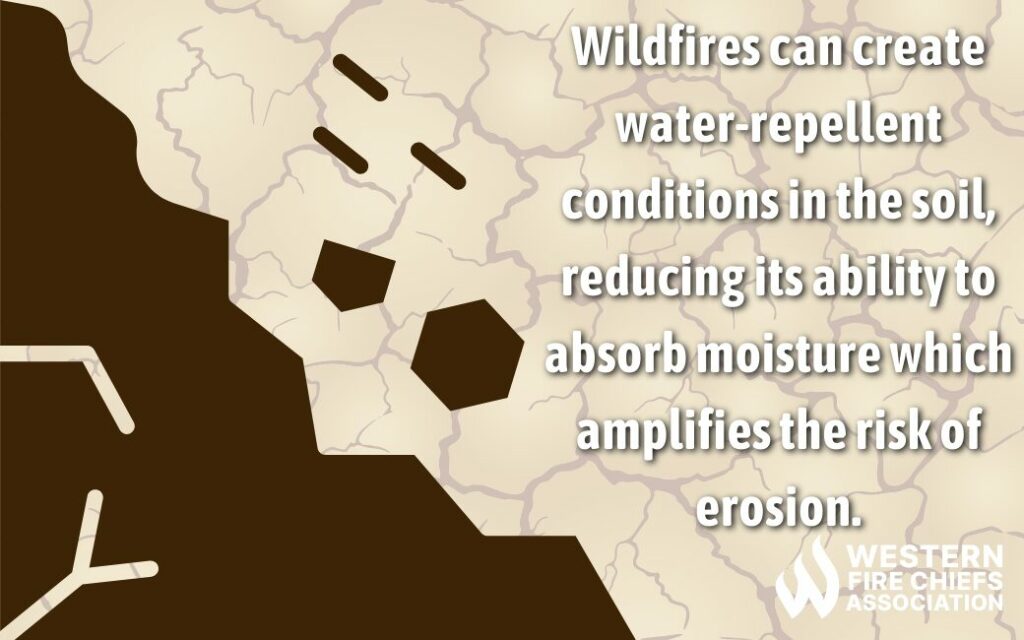Fire Pit Safety Tips
Stay safe around the campfire with tips from the Western Fire Chiefs Association. Learn essential precautions and practices for a worry-free outdoor campfire.
Delve into the aftermath of wildfires on soil and vegetation. Understand the ecological impact and explore strategies for recovery and restoring biodiversity.
Published:February 20, 2024
Edited:April 14, 2024

Delve into the aftermath of wildfires on soil and vegetation. Understand the ecological impact and explore strategies for recovery and restoring biodiversity.
Exploring the aftermath of wildfires uncovers a complex relationship between water, soil, and vegetation. The impact on soil and vegetation becomes a critical focal point, with repercussions extending beyond the immediate burn zones. This article explores how water influences the recovery process for both soil and vegetation after wildfires. By examining these ecological effects, we can better understand the challenges facing biodiversity and ecosystem health, helping us find better ways to recover after wildfires.
Soil is incredibly important for sustaining life as it provides essential services to ecosystems. It acts as a natural filter for water and provides a nurturing environment for plants to grow. Soil supports a wide variety of organisms, contributing significantly to biodiversity. Additionally, soil is a vital source of antibiotics that are important for fighting diseases. Humans rely on soil for multiple purposes, such as solid waste disposal, wastewater purification, and as the foundation for urban development. Soil serves as the cornerstone of agricultural systems, supplying us with vital resources such as food, feed, fiber, and fuel.1
Wildfires leave their mark on soil in various ways, depending on how much heat reaches the ground during the fire. Slow-moving fires linger closer to the ground for extended periods of time, 4 but help improve the productivity of the soil. High-intensity fires typically do not cause extreme damage to the soil as they’re usually pushed through the tree canopy by strong winds.4 When these fires do reach the ground, however, the negative effects can be extreme. The intense heat kills microorganisms and sterilize the soil. 3 Here are some of the aftermaths of wildfires and the consequences on soil:
As vegetation and soil layers are burned, they can create hydrophobic or water-repellent soil conditions. This hydrophobic zone manifests as a distinct layer within or parallel to the soil surface, where organic compounds with hydrophobic properties coat soil aggregates or minerals. This phenomenon occurs within a temperature range of 176 to 288 degrees Celsius. Hydrophobic soils create a barrier against water infiltration, essentially sealing off the soil during rainfall. This leads to heightened surface runoff and erosion. Once this takes place, the moisture in the soil starts to diminish.5
One of the most significant impacts on soils stems from the combustion of organic matter. The extent of organic consumption varies, ranging from scorching, which produces black ash, to complete ashing, resulting in white ash. This variation depends on factors such as fire severity, moisture content, and the thickness of the topsoil. Moderately burned areas typically retain around 38% of vegetation on the ground, referred to as ground cover, whereas severely burned areas retain 0 to 23%.5
Ash from wildfires can deeply affect ecosystems. It changes how carbon moves through the environment, not just in the burned area but also around the world. When ash mixes with soil, it temporarily changes the soil’s acidity, adds nutrients, and alters how the soil looks and acts, like how water moves through it. When ash lands on the ground, it creates two layers: the soil and the ash layer. How they work together depends on things such as how much ash there is, what kind it is, and how much rain falls. The way ash affects water flow and soil depends on how well it holds water and how easily water can move through it. When rain washes over burned areas, it carries away nutrients from the ash, which can pose problems for drinking water quality. However, ash also benefits soil microbes, promoting their growth and enhancing plant growth, showing that it’s not all bad news for the ecosystem.6
After a wildfire, when ash and soil mix, the soil’s pH increases, which significantly affects its chemical and biological properties. This rise in pH, particularly after intense fires, is due to the nutrients added by the ash. Changes in the soil’s pH post-fire may depend on initial soil pH, nutrient content, and the amount of deposited ash. In some cases, reports have shown no significant change in pH following fire events. This lack of change could be related to environmental conditions after the fire, such as erosion, and may be more common after low to moderate fires.7
Soil pH plays a critical role in nutrient availability. For example, the availability of phosphorus, one of the major plant nutrients found in soil, 8 can be affected by pH levels. It becomes unavailable at low pH due to the formation of insoluble minerals with iron, while at high pH levels, it is immobilized by calcium.7

Following a wildfire, erosion can quickly escalate into a major environmental challenge, influenced by a multitude of factors. Typically, roots and organic matter act as nature’s anchors, securing soil and preserving its moisture. When these elements vanish, the soil becomes vulnerable to wind, rain, and gravity, causing big shifts.2 The intense heat of wildfires not only consumes vegetation but also weakens it, making the soil highly prone to erosion. As previously mentioned in this article, wildfires can also create water-repellent conditions in the soil, reducing its ability to absorb moisture and increasing surface runoff, which further amplifies the risk of erosion.
Microbial communities play a pivotal role in ecosystem stability and functioning. In a single teaspoon of soil, there are more microorganisms than there are people on Earth.3 Environmental disturbances, such as wildfires, directly affect soil microbial diversity by burning up litter and soil humus, which are habitats for living organisms.9 The heat generated from fires can destroy microorganisms in the soil. Soil heating during fires is influenced by soil moisture and temperature. Higher temperatures result in increased microbial death. Some microbes, like mycorrhizal fungi, are more sensitive to heat because they grow slower and need living plants to survive. However, certain heat-resistant microbes, like archaea, can survive. Extremophile fungi can be found after fires, and they can affect carbon dynamics by interacting with specific plant species. Severe fires could increase competition among bacteria and fungi. It often takes many years for the area’s microbial communities to return to their normal levels after a fire. Some of these microbes can bounce back quickly, but others will likely die off. The condition of the environment and the soil after the fire is important for the recovery of these microbial communities. If it’s not the same as before the fire, some microbes, like those that are sensitive to changes in acidity or those that depend on specific plants, might not come back as strong. While some of these microbes can reproduce quickly, it may take a long time for the soil to return to its normal state. With fires occurring more frequently, there is potential for shifts in the type of microbes inhabiting the soil. This is because some microbes, like fungi, may require an extended period to recover from the heat and the loss of their plant hosts.10
Recovering from a wildfire is no easy task. Fires can devastate the soil by burning away vital components like plants and nutrients. In some cases, affected forests undergo a natural regeneration process, where new seeds from surviving plants begin to sprout, kickstarting the ecosystem’s self-rebuilding process without human intervention. These initial plants are crucial for ecosystem recovery as they are resilient and can thrive in harsh conditions. They also create habitats for other plants and animals to return to the area. To expedite the process, human interventions are sometimes necessary. Repairing soil damage post-fire involves various strategies, such as preventing soil erosion by installing barriers and planting new vegetation. Mulching, planting pioneer plants, and building terraces are effective methods for stabilizing soil. Additionally, enriching the soil with natural elements like compost helps restore its health.
Stay safe around the campfire with tips from the Western Fire Chiefs Association. Learn essential precautions and practices for a worry-free outdoor campfire.
Discover essential firework safety tips to ensure a dazzling display without accidents. Learn how to celebrate responsibly with expert guidance from WFCA.
Explore the role of AI in wildfire prediction with guidance from the WFCA. Learn how advanced algorithms and data analytics enhance early detection and response.